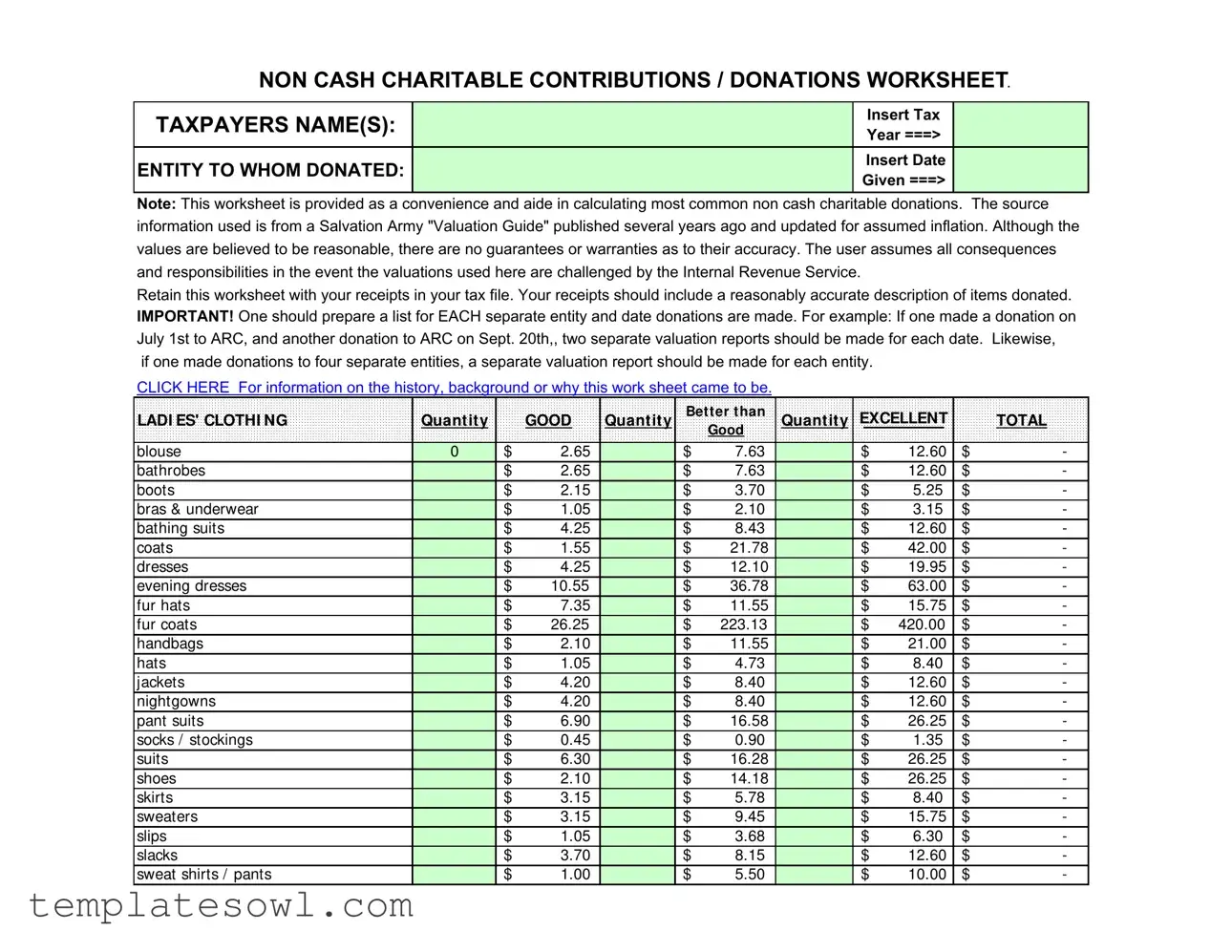When completing the Charitable Worksheet form, individuals often encounter several common mistakes that can complicate their tax reporting and charitable donation valuations. Addressing these errors can lead to more accurate submissions and potential tax benefits.
One frequent error is failing to list separate donations for different entities. Each donation made to a distinct organization requires its own valuation report. For instance, if a person donates to the American Red Cross on one date and the Salvation Army on another, they should maintain separate records for each transaction. This method helps ensure clarity and compliance with IRS requirements.
Additionally, many people overlook the importance of accurately noting the date of each donation. The date is crucial not only for record-keeping but also for aligning with the correct tax year. Errors in dating can lead to complications during an audit, so it's essential to keep a precise account of when donations were made.
Misclassifying items is another common mistake. Each item donated should be categorized correctly according to its condition, whether it's 'Good', 'Better than Good', or 'Excellent'. This classification impacts the estimated value assigned, which might later be disputed if not clearly articulated and justified.
Many individuals also forget to attach or retain receipts with their worksheets. A thorough description of each item, as well as the receipt from the charitable organization, should be kept together with the worksheet. This documentation is vital for proving the legitimacy of the donations should they be questioned by the IRS.
Another issue arises from ignored analytical tools, like the Salvation Army "Valuation Guide." Not consulting this guide can lead to undervaluation or overvaluation of donated items, which can trigger further scrutiny from tax authorities.
Moreover, some may inaccurately estimate the value of miscellaneous items not assigned specific categories in the worksheet. Although individuals can assign their values, they must ensure these are reasonable and consistent with market trends to withstand potential audits.
Failure to provide adequate details about the items donated can also be a significant oversight. Merely stating 'clothing' without specifics creates ambiguity and may make it difficult to justify the assigned value later on.
People sometimes confuse the categorization of items like home goods and appliances, further complicating the valuation process. Each item should fit neatly into the specific categories provided in the worksheet to streamline evaluation.
Lastly, one mistake that is often made involves ignoring the need for a comprehensive review before submission. Rushing through the completion of the worksheet can lead to clerical errors, omissions, or miscalculations that may affect the final valuation and tax reporting.
Awareness of these common mistakes can empower individuals to complete their Charitable Worksheet more effectively. By maintaining meticulous records and seeking clarity on valuations, taxpayers can enhance both their compliance and accuracy regarding charitable contributions.




 Revised March 22, 2007
Revised March 22, 2007